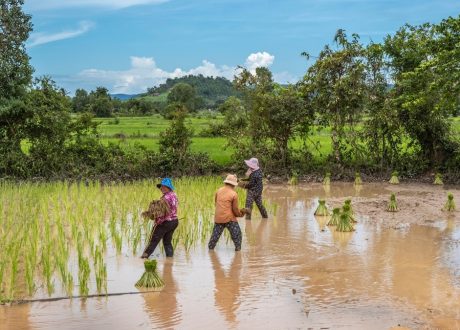
UNCTAD urges stronger action to help least developed nations tap into carbon markets
The United Nations Trade and Development (UNCTAD) urged during the 29th United Nations Climate Change ...

Climate change dealt a sharp blow to Alaska as the unprecedented heat wave killed tons of fishes. Alaska produces more than half the fish caught in waters off the coast of the United States, with an average wholesale value of nearly $4.5 billion a year.
The impact of climate change on food security became quite clear as fishes in Alaska floated on the sea surface dead over the hot weather. There is now no sea ice within 150 miles of Alaskan shores.
The pace of ice loss is “unprecedented” in 40 years of satellite records, scientists said, with the Bering Sea, which separates Alaska from Russia, left completely ice-free.
The recent spate of record warmth has been impacting marine life. “In Nome, Pacific cod have been showing up in crab nets. They used to be extremely rare in the North Bering Sea,” said Rick Thoman, an Alaska climate specialist at the International Arctic Research Center. “Meanwhile, salmon have been reportedly dying, suffocating as water temperatures climb and less dissolved oxygen remains in the water.” Thoman also cited a number of other multispecies die-offs in recent years that has marine biologists and the general public alike concerned.
Alaskans, especially the indigenous populations, have been impacted by the melting ice and have seen their way of life altered by the changing environment, particularly communities who rely on the sea ice for hunting.
Alaska has seen several wildfires during heat spates as most homes in Alaska are built to trap heat inside.
July temperature in Alaska hit a record of 58.1F (14.5C), nearly 1F above the previous monthly high set in July 2004, according to the National Oceanic and Atmospheric Administration (NOAA). Cities and towns across the vast US state, such as Anchorage, Utqiaġvik (formerly known as Barrow) and Kodiak all had their warmest month in 125 years of record-keeping.
For the fourth month in a row, the contiguous US continued its streak of record-wet, 12-month periods, this time for August 2018 through July 2019. Alaska saw its hottest month in recorded history last month, accompanied by several wildfires.
Wet conditions spanning the last 12 months (August 2018 through July 2019) set a new precipitation record for this period, with an average of 37.73 inches — 7.78 inches above average — according to scientists at NOAA’s National Centers for Environmental Information.
The average precipitation for July was 2.69 inches (0.09 of an inch below average), which ranked in the middle third of the 125-year record. Wetter conditions were found across the northern Plains, much of the Mississippi and Ohio River valleys and parts of the Northeast.
The average temperature for July across the contiguous U.S. was 74.6 degrees F (1.0 degree above the 20th-century average). Alaska marked its hottest July and hottest month on record with an average temperature of 58.1 degrees (5.4 degrees above average). The rest of the US experienced temperatures that fell in the upper third of the 125-year record.
Much of northern and central Alaska is covered by permanently frozen soil known as permafrost. When this icy soil melts, the organic matter within it decomposes and releases long-buried stores of greenhouse gases, including carbon dioxide and methane. This, in turn, speeds up global warming, and the pace and extent of permafrost melt is an increased focus for scientists as they witness rapid climate change underway in Alaska and other parts of the Arctic.
The world is striving to curb climate change which is casting its shadow on the globe.
The United Nations Trade and Development (UNCTAD) urged during the 29th United Nations Climate Change ...
About 140 oil and gas companies have committed to credibly measuring and reducing methane emissions ...
Egypt’s Minister Rania Mashat has witnessed the launch of two international initiatives on sustainable energy ...


اترك تعليقا